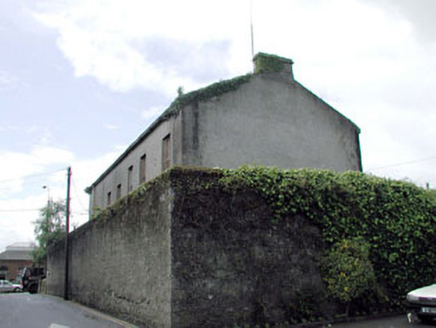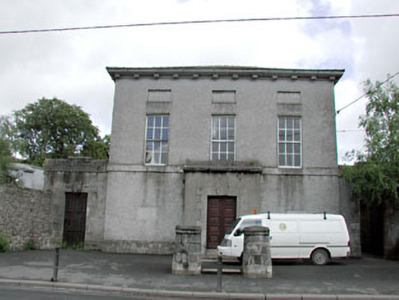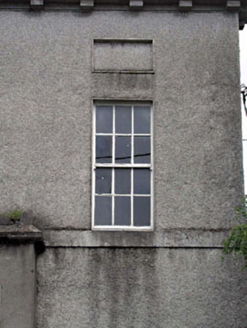Survey Data
Reg No
11817055
Rating
Regional
Categories of Special Interest
Architectural, Historical, Social
Original Use
Court house
Date
1825 - 1830
Coordinates
273036, 212320
Date Recorded
--/--/--
Date Updated
--/--/--
Description
Detached three-bay two-storey former courthouse, built 1829, possibly over basement retaining early aspect on a symmetrical plan with single-bay single-storey flat-roofed projecting porch to centre, single-bay single-storey flanking entrance bays and six-bay two-storey side elevations to south-east and to north-west. Now disused. Hipped and gable-ended roof with slate. Clay ridge tiles. Roughcast chimney stack. Cast-iron rainwater goods on corbelled eaves course. Flat-roofed to porch behind parapet wall. Materials not visible. Roughcast walls. Unpainted. Cut-stone string/sill course to first floor. Rectangular recessed panels over openings to first floor. Cut-stone consoled cornice to eaves. Rendered walls to porch. Unpainted. Cut-stone cornice with blocking course over. Square-headed window openings. Stone sills. 6/6 timber sash windows. Square-headed door openings. Cut-stone block-and-start surrounds with keystones. Replacement timber panelled doors, c.1980. Set back from line of road. Tarmacadam forecourt to front.
Appraisal
Kildare Courthouse is a fine and imposing Classical-style building that retains most of its original form and character. The courthouse is of considerable social and historical significance as one of the earliest civic buildings in the locality, sponsored by the Grand Jury and built to the designs of John Hargrave by Denis Hays. Although now apparently disused, the courthouse remains in good condition and retains many important early or original salient features and materials, including multi-pane timber sash fenestration and a slate roof having cast-iron rainwater goods. A survey undertaken by the NIAH in 1999 identified interior features and fittings of significance, which are believed to remain intact. The courthouse is an attractive and prominent landmark in the locality, set back from the line of the road, emphasising its importance in the town, with a front (south-west) elevation that presents an austere façade on to the streetscape.





